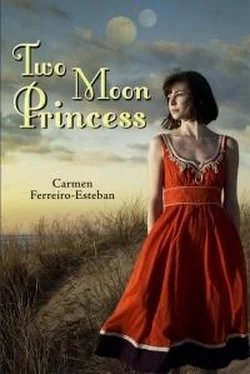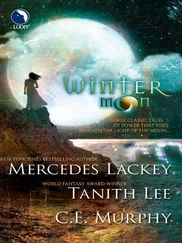But Tío had other plans.
“Good news, Andrea,” he told me on Thursday as I left my English class. “I’ve been able to rearrange my schedule and free up this weekend for you.”
I didn’t say anything, but my eyes must have conveyed my total lack of enthusiasm at spending time with him, because he added. “That means we’re going on a road trip. We’ll be visiting some of the Spanish missions.” He said this brightly, as if I should be thrilled.
I wasn’t. I would have preferred to stay in Davis. But I couldn’t tell Tío about my wish to see John—Tío would have guessed my interest in John and probably forbidden me from seeing him altogether to avoid further trouble. So I had no believable excuse for staying, and in the end, I agreed to accompany Tío Ramiro on his trip.
Kelsey laughed when I asked her if she wanted to come. “Go with you to see the missions? No thanks. I saw them all when I was a child, once too often, actually, and have no interest in seeing them again. They all look the same to me. Very nice, very pretty, very boring.”
“Why is your father taking me there, then?”
Kelsey shrugged. “Who knows? He may actually believe everybody shares his passion for them. You see, Dad has been studying the missions for so long he may have lost perspective. He even runs a field course in one of them over the summer.” And then after a pause, she added with a knowing smile, “John helps him.”
“John?”
“Yes. He’s one of dad’s graduate students. Hasn’t John told you that? Oh, I see you have other, more important things to talk about. Or maybe you don’t even need to talk.”
Just then, she reminded me more of Rosa than I cared to contemplate. Trying not to blush, I asked her what time the basketball game was on Sunday. Maybe if it was not too early, I could still make it back in time to watch it.
Kelsey laughed. “Don’t worry, Andrea. Their team doesn’t play in Davis this Sunday. But I’ll tell John you asked.”
I blushed anyway.
Kelsey was right about the missions. They were nice. She was also totally wrong: nice did not begin to convey the magnificent beauty of the Mission Santa Inés, the first place we visited.
Set in a wide open valley against a background of distant hills, the mission seemed to grow out of the earth as we approached it, seeming both eternal and dispensable, like a white speck dropped on the canvas by mistake one day and later embraced and made the center of the painter’s picture.
We left the car in the parking lot—empty, since the mission was closed that day—and walked up to the front of the church.
Two cypresses—vertical lines of green against the whitewashed walls—framed its wooden door; high above, the roof—a triangle of red tiles—stood out against the blue sky. To our right rose the bell tower, a metallic cross on top and three arched openings set in two rows where the bells hung. Beyond the tower was a long wall with a single arch that served as the entrance to the graveyard. To our left stood the cloister, a succession of arches growing smaller in the distance under a red-tiled roof.
“Who built this mission?” I asked Tío, my voice barely above a whisper so as not to disturb the majestic simplicity of the place.
“The Spaniards,” Tío said. “The descendants of the same people that crossed from Spain into your world.” And finding the door to the church locked, he rang the bell.
I waited for the clear sound of the bell to die in the distance and then spoke again, “I thought Spain was far from here.”
“So it is, Andrea.”
“But then how—”
Just then the door opened, and a man dressed in jeans and a plaid shirt stood in the doorway. The man smiled at Tío; they shook hands and exchanged greetings. After Tío introduced him to me as the director of the mission, he motioned us to come inside.
The church consisted of a single rectangular room. Pictures topped by crosses hung along its whitewashed walls, and in two places, roughly in the middle, frescos painted in green and pink and blue depicted flowers surrounding a religious scene.
Two rows of wooden benches faced the main altar from where the image of Santa Inés watched over us. The brass candelabra, hanging from the wooden beams in the shape of a wheel and full of candles, would have felt at home in my father’s castle.
We left the church and entered the cloister, a gallery of arches built around a square courtyard. A fountain sat in its center. The murmur of the water singing in the stillness of the morning filled the air, while the neatly kept hedges reminded me of the queen’s garden back in my world.
As we walked under the arches, our steps unexpectedly loud on the tiled floor, I noticed that the windows that opened to the cloister were blocked with iron bars. And yet the place didn’t feel like a prison to me, more like a sanctuary, a refuge out of time.
Tío and his friend excused themselves as they had things to discuss and left me alone. And as I sat by myself on one of the benches against the wall, I had the sudden feeling of being watched, the feeling that all the people who had ever lived in the mission were still here in some other dimension, and that if I moved my eyes ever so slightly, I would be able to see them, and if I listened hard enough, I would be able to hear their steps. The steps of the Spaniards who had built this place, the descendants of the people who were also my ancestors. And then the bells tolled, and the spell was broken.
Tío returned and we went inside, into a room plainly furnished with a long wooden table and benches, where we shared lunch with his friend.
Later in the afternoon, we drove away toward the rolling hills, and the mission receded again into the distance, a speck of white lost in the valley.
We reached the mission of Santa María early in the evening. At least that’s what the sign by the side of the road indicated. But this time, instead of buildings to welcome us, only a bare landscape of shrubs and broken earth mounds was visible when the car stopped.
“Here we are,” Tío said, holding open the car door for me.
I stared at him.“We are where? I mean, where is the mission?”
Tío pointed up the hill and nodded. “There. Those walls were once the mission of Santa María.”
I could not believe we had driven all the way here to see . . . nothing. Surely Tío was joking.
But he was not. He just stood there holding my door open. And when he spoke again, his voice was pressing. “Come on, Andrea. We have to set up the tents and start a fire before sunset. It gets cold quickly here. And I want you to see the ruins beforehand.”
We were going to sleep here? Was Tío out of his mind? Not knowing what else to do, I got out of the car and followed him up the hill.
“Why didn’t you tell me this mission was in ruins?” I asked him as I ran to keep up with him.
Tío shrugged. “I thought I did.”
He was not being entirely forthright. Somehow I knew he did not want me to know the mission was in ruins until I had seen it. But why?
All that was left of the mission were some broken walls and a solitary arch holding up the sky. There were no stones around the ruins, either. Had later peoples stolen them to build their houses?
“No, Andrea,” Tío told me when I asked him. “There were no stones. The mission was built with adobe bricks. Bricks made out of earth and dried in the sun.”
“But what about the rain . . .”
“It doesn’t rain much here, Andrea. As you can see, there is not much water, either.”
“Why did they build a mission then, if there is no water?” My kingdom being a land of green mountains and running streams, I had trouble imagining a world without water.
Читать дальше












